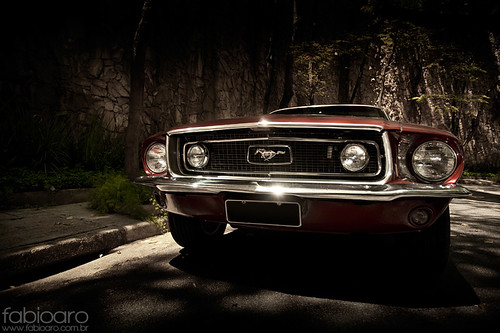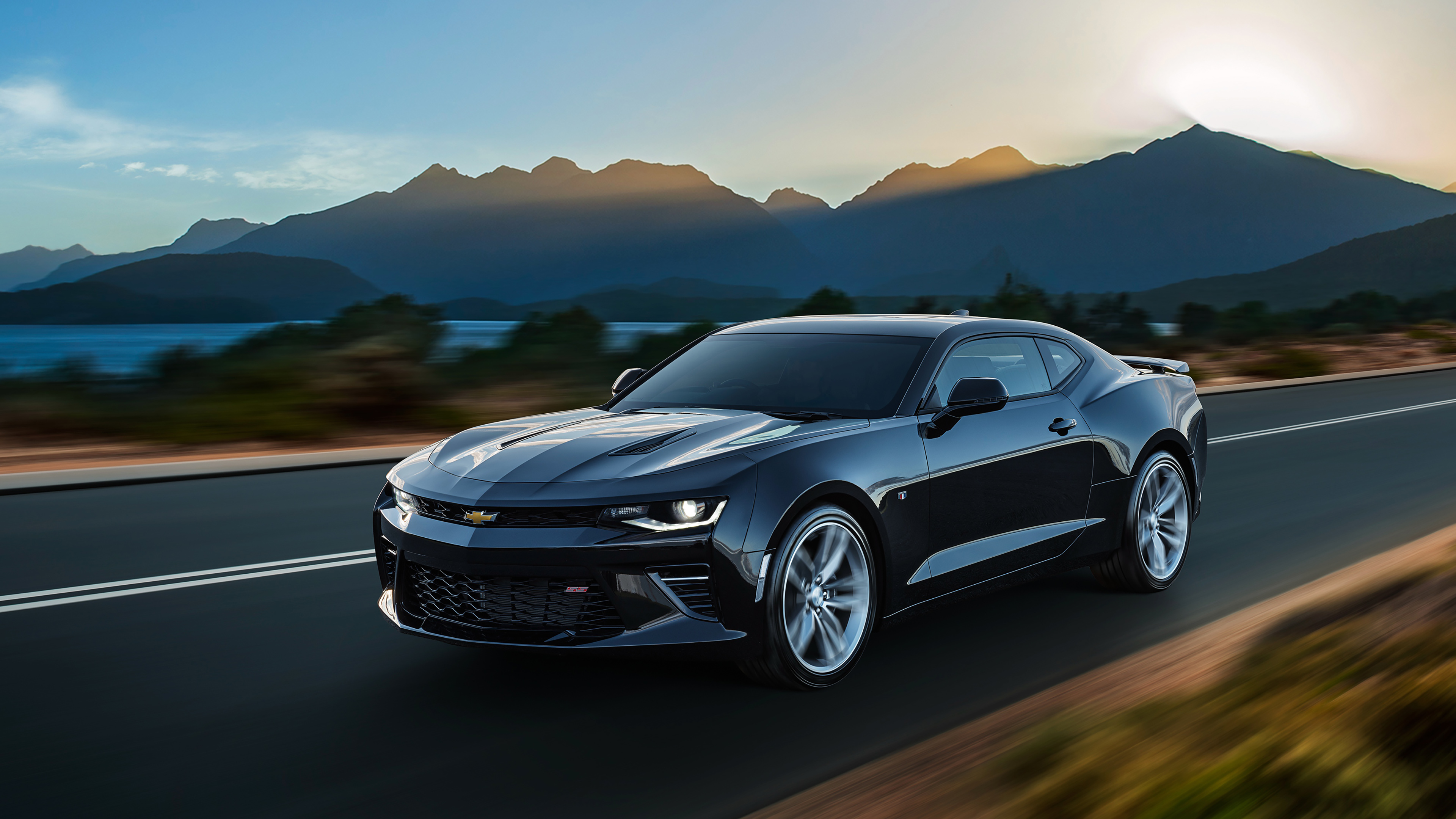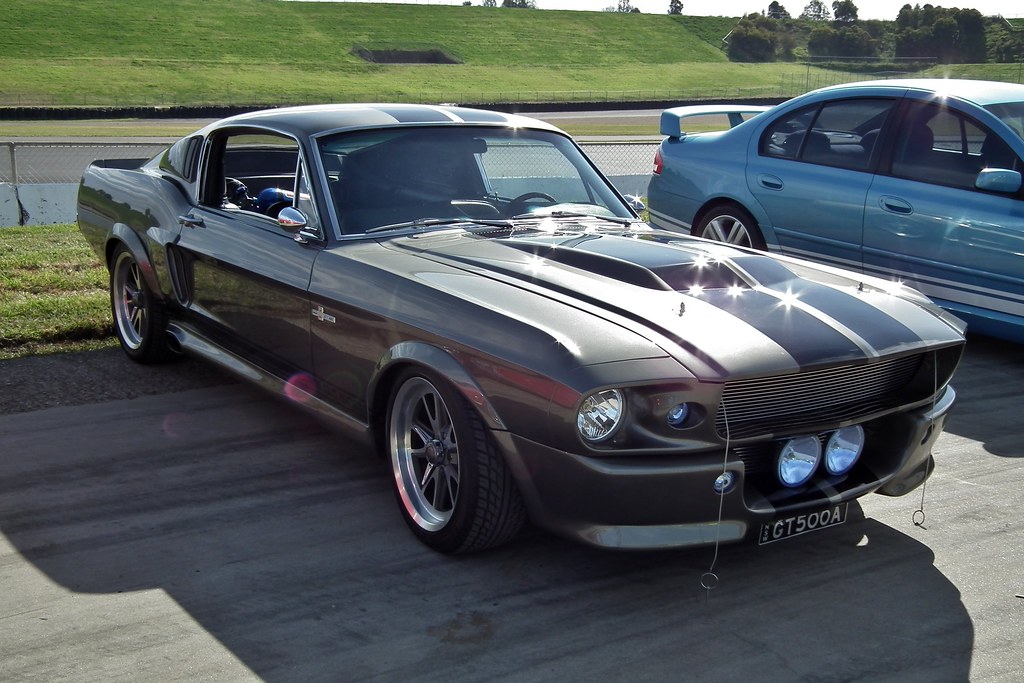
The Ford Mustang. For over 55 years, this legendary nameplate has embodied thrilling performance and quintessential American muscle, delivering immense power and rear-wheel-drive excitement at an accessible price. From its iconic pony logo to its unforgettable roar, the Mustang has captivated enthusiasts for generations, standing proudly as a top choice among muscle cars like the Chevrolet Camaro and Dodge Charger. It’s a blend of raw power, vintage vibes, and modern flair that few vehicles can match, making the dream of owning one a powerful draw for many.
However, the journey to muscle car ownership, particularly when eyeing a pre-owned pony, isn’t always a smooth one. While the Mustang promises an exhilarating ride, not every model year was a hit, and some have left owners grappling with frustrating, costly repairs, safety concerns, or disappointing build quality. The allure of an affordable used Mustang can sometimes overshadow the critical need for due diligence, leading buyers down a path of unforeseen complications.
This in-depth guide is designed to equip you with the knowledge needed to navigate the used Mustang market wisely. We’ll shine a light on specific model years that have consistently been flagged for issues and outline the common problems that often surface. Our goal is to help you spot potential headaches before you buy, ensuring that your pursuit of a Mustang legend culminates in a satisfying ownership experience, not a garage full of regrets. Let’s shift gears and dive into the specific years that require extra caution.
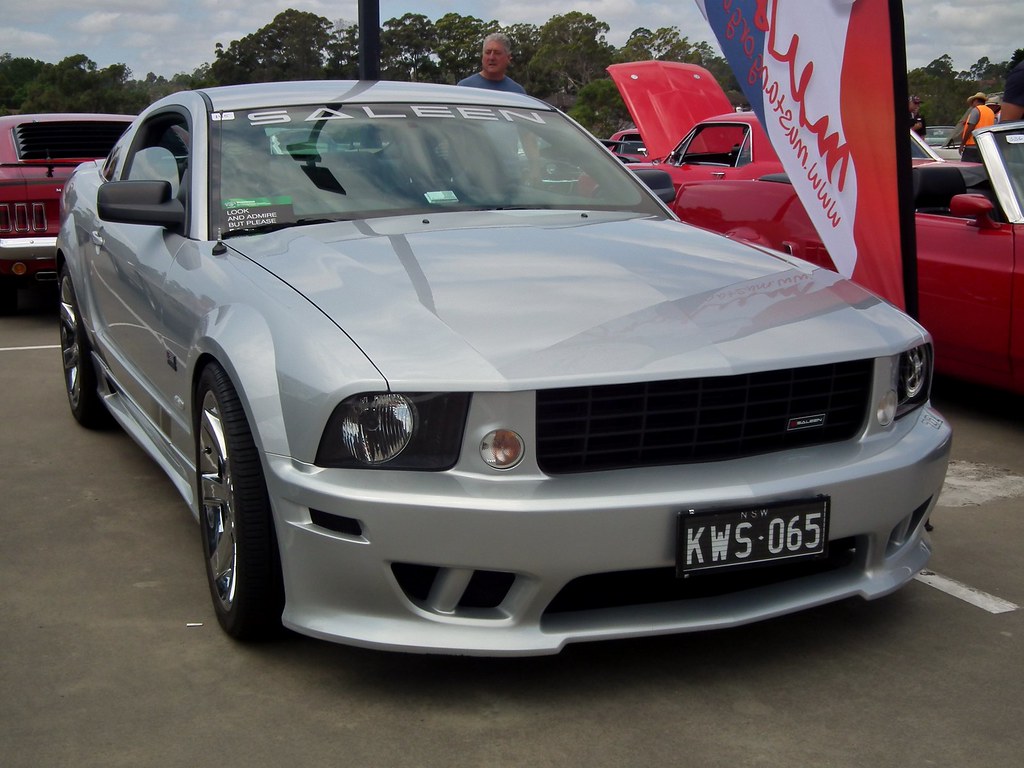
1. **Avoiding the 2005 Ford Mustang: Looks Great, Drives You Crazy**The debut of the fifth-generation Mustang in 2005 wowed enthusiasts with its striking retro-inspired design, promising a revival of classic aesthetics. However, this inaugural year of a new generation quickly revealed significant issues that dampened initial excitement. Beneath the captivating exterior, a number of problems emerged, turning the dream of a new Mustang into a frustrating reality for many.
Among the most frequently reported problems were persistent “electrical gremlins.” Owners described frustrating instances of flickering dash lights, failing power windows, and vexing battery drain issues. These electrical malfunctions weren’t minor annoyances; they pointed to deeper systemic problems that could be both difficult and expensive to diagnose and repair, undermining the vehicle’s supposed modern reliability.
Beyond electrical woes, the 2005 model also suffered from notable “paint and body quality” concerns, with factory paint prone to chipping and fading prematurely. Furthermore, a “laggy response from the gas pedal,” or “throttle hesitation,” made the driving experience less enjoyable than anticipated for a performance vehicle. If you’re considering a 2005 model, it is absolutely crucial to verify these known issues have been thoroughly addressed by the previous owner, ideally with documented proof.
Car Model Information: 2014 Ford Mustang V6
Name: Ford Mustang
Caption: 2018 Ford Mustang GT 5.0
Aka: Ford T5 (Germany)
Manufacturer: Ford Motor Company
Production: March 1964 – present
ModelYears: 1965–present
Class: Unbulleted list
BodyStyle: Unbulleted list
Layout: Front-engine, rear-wheel-drive layout
Categories: 1970s cars, 1980s cars, 1990s cars, 2+2 coupés, 2000s cars
Summary: The Ford Mustang is an American automobile manufactured and marketed by Ford since 1964, as Ford’s longest nameplate in continuous production. Currently in its seventh generation, it is the fifth-best selling Ford car nameplate. The namesake of the “pony car” automobile segment, the Mustang was developed as a highly styled line of sporty coupes and convertibles derived from existing model lines, initially distinguished by its pronounced “long hood, short deck” proportions.
Originally predicted to sell 100,000 vehicles yearly, the 1965 Mustang became the most successful vehicle launch since the 1927 Model A. Introduced on April 17, 1964 (16 days after the Plymouth Barracuda), over 400,000 units were sold in its first year; the one-millionth Mustang was sold within two years of its launch. In August 2018, Ford produced the 10-millionth Mustang; matching the first 1965 Mustang, the vehicle was a 2019 Wimbledon White convertible with a V8 engine.
The success of the Mustang launch led to multiple competitors from other American manufacturers, including the Chevrolet Camaro and Pontiac Firebird (1967), AMC Javelin (1968), and Dodge Challenger (1970). It also competed with the Plymouth Barracuda, which was launched around the same time. The Mustang also had an effect on designs of coupes worldwide, leading to the marketing of the Toyota Celica and Ford Capri in the United States (the latter, by Lincoln-Mercury). The Mercury Cougar was launched in 1967 as a unique-bodied higher-trim alternative to the Mustang; during the 1970s, it included more features and was marketed as a personal luxury car.
From 1965 until 2004, the Mustang shared chassis commonality with other Ford model lines, staying rear-wheel-drive throughout its production. From 1965 to 1973, the Mustang was derived from the 1960 Ford Falcon compact. From 1974 until 1978, the Mustang (denoted Mustang II) was a longer-wheelbase version of the Ford Pinto. From 1979 until 2004, the Mustang shared its Fox platform chassis with 14 other Ford vehicles (becoming the final one to use the Fox architecture). Since 2005, the Mustang has used the D2C platform, unique to the Mustang.
Through its production, multiple nameplates have been associated with the Ford Mustang series, including GT, Mach 1, Boss 302/429, Cobra (separate from Shelby Cobra), and Bullitt, along with “5.0” fender badging (denoting 4.9 L OHV or 5.0 L DOHC V8 engines).
Get more information about: Ford Mustang
Buying a high-performing used car >>>
Brand: Ford Model: Mustang
Price: $13,500 Mileage: 64,323 mi.
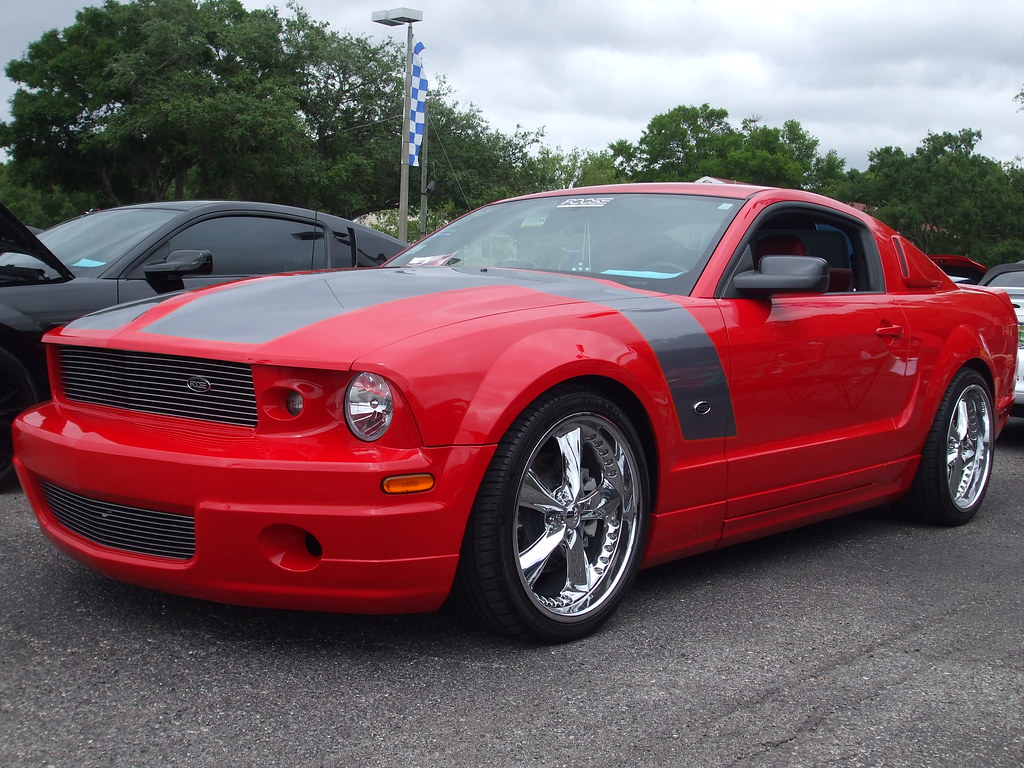
2. **Steering Clear of the 2006 Ford Mustang: More of the Same Problems**Following its predecessor, the 2006 Ford Mustang largely carried over many of the flaws that plagued the 2005 model, offering little in the way of significant reliability improvements. This continuity in problems meant buyers hoping for a quick fix in the second year of the generation were often left disappointed, facing similar headaches and diminishing returns on their investment.
One major area of concern was “interior problems,” where “cheap plastic trim, loose panels, and early wear-and-tear” became common complaints. These issues spoke to a lack of durable materials and robust construction within the cabin, detracting from the overall ownership experience. The interior quality often felt subpar, showing signs of age and degradation far too soon for such an iconic vehicle.
Adding to these concerns, the 2006 Mustang was an early model affected by the widespread “Takata airbag recall crisis,” necessitating critical safety repairs. Moreover, owners continued to report “throttle body issues,” manifesting as “unresponsive acceleration and engine surging,” which could make for an unpredictable drive. Despite minor adjustments, the 2006 model still ranks low in reliability and owner satisfaction, making it a year that typically warrants careful consideration or outright avoidance.
Car Model Information: 2014 Ford Mustang V6
Name: Ford Mustang
Caption: 2018 Ford Mustang GT 5.0
Aka: Ford T5 (Germany)
Manufacturer: Ford Motor Company
Production: March 1964 – present
ModelYears: 1965–present
Class: Unbulleted list
BodyStyle: Unbulleted list
Layout: Front-engine, rear-wheel-drive layout
Categories: 1970s cars, 1980s cars, 1990s cars, 2+2 coupés, 2000s cars
Summary: The Ford Mustang is an American automobile manufactured and marketed by Ford since 1964, as Ford’s longest nameplate in continuous production. Currently in its seventh generation, it is the fifth-best selling Ford car nameplate. The namesake of the “pony car” automobile segment, the Mustang was developed as a highly styled line of sporty coupes and convertibles derived from existing model lines, initially distinguished by its pronounced “long hood, short deck” proportions.
Originally predicted to sell 100,000 vehicles yearly, the 1965 Mustang became the most successful vehicle launch since the 1927 Model A. Introduced on April 17, 1964 (16 days after the Plymouth Barracuda), over 400,000 units were sold in its first year; the one-millionth Mustang was sold within two years of its launch. In August 2018, Ford produced the 10-millionth Mustang; matching the first 1965 Mustang, the vehicle was a 2019 Wimbledon White convertible with a V8 engine.
The success of the Mustang launch led to multiple competitors from other American manufacturers, including the Chevrolet Camaro and Pontiac Firebird (1967), AMC Javelin (1968), and Dodge Challenger (1970). It also competed with the Plymouth Barracuda, which was launched around the same time. The Mustang also had an effect on designs of coupes worldwide, leading to the marketing of the Toyota Celica and Ford Capri in the United States (the latter, by Lincoln-Mercury). The Mercury Cougar was launched in 1967 as a unique-bodied higher-trim alternative to the Mustang; during the 1970s, it included more features and was marketed as a personal luxury car.
From 1965 until 2004, the Mustang shared chassis commonality with other Ford model lines, staying rear-wheel-drive throughout its production. From 1965 to 1973, the Mustang was derived from the 1960 Ford Falcon compact. From 1974 until 1978, the Mustang (denoted Mustang II) was a longer-wheelbase version of the Ford Pinto. From 1979 until 2004, the Mustang shared its Fox platform chassis with 14 other Ford vehicles (becoming the final one to use the Fox architecture). Since 2005, the Mustang has used the D2C platform, unique to the Mustang.
Through its production, multiple nameplates have been associated with the Ford Mustang series, including GT, Mach 1, Boss 302/429, Cobra (separate from Shelby Cobra), and Bullitt, along with “5.0” fender badging (denoting 4.9 L OHV or 5.0 L DOHC V8 engines).
Get more information about: Ford Mustang
Buying a high-performing used car >>>
Brand: Ford Model: Mustang
Price: $13,500 Mileage: 64,323 mi.
Read more about: 12 Vehicles That Will Test Your Patience (and Your Wallet) with Never-Ending Electronic Glitches
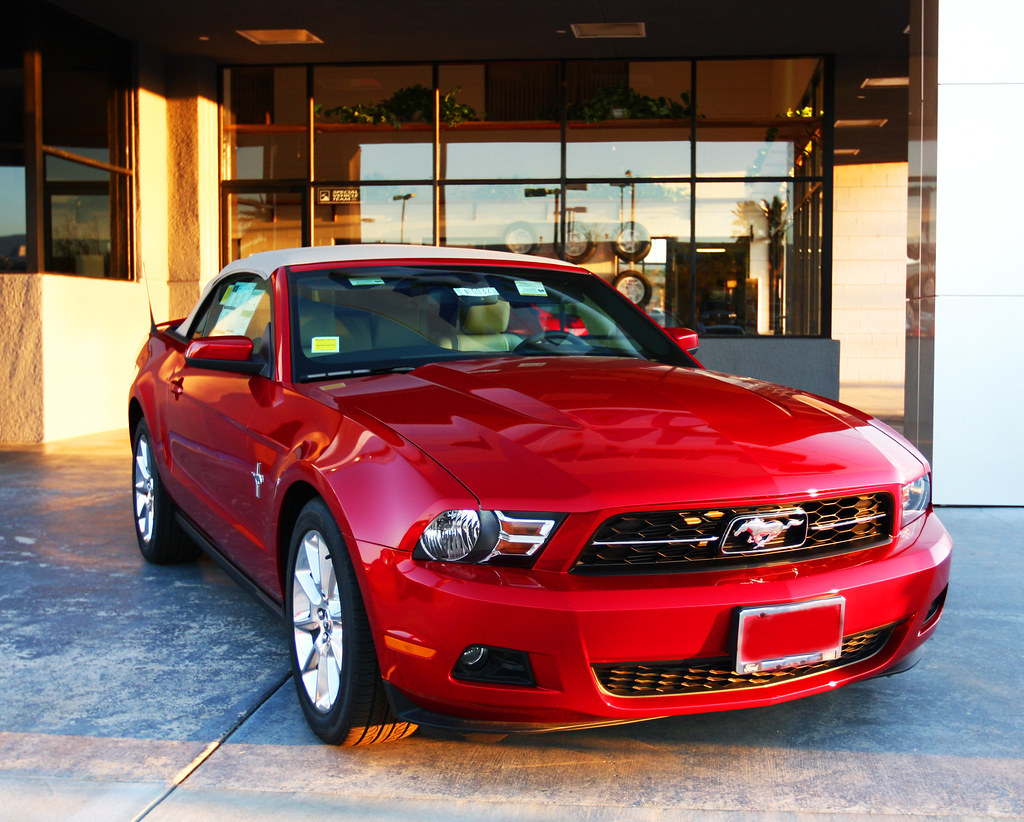
3. **Avoiding the 2010 Ford Mustang: Transmission Troubles Begin**The 2010 Ford Mustang marked a visual refresh, introducing updated styling that gave it a more modern edge. While aesthetic enhancements were appreciated, this cosmetic facelift unfortunately failed to address several key mechanical issues that began to surface more prominently, turning what appeared to be an improvement into a year fraught with significant reliability concerns for many.
The most alarming issue reported by owners revolved around “transmission failure,” particularly with the automatic transmissions. Drivers complained of “clunky or failing automatic transmissions,” indicating premature wear or design flaws that led to costly repairs and inconvenient breakdowns. For a car synonymous with robust performance, inconsistent gear shifting was a major disappointment, affecting both the driving experience and the vehicle’s long-term value.
Compounding the transmission woes, “engine knocking” became a frequent complaint, especially in the V6 variant, signaling potential serious internal engine problems. Coupled with a “harsh ride quality” due to less-than-optimal suspension tuning, the 2010 model year, despite its stylish upgrades, did not deliver expected improvements in reliability or comfort. It stands as a stark reminder that visual changes do not always equate to mechanical advancements.
Car Model Information: 2014 Ford Mustang V6
Name: Ford Mustang
Caption: 2018 Ford Mustang GT 5.0
Aka: Ford T5 (Germany)
Manufacturer: Ford Motor Company
Production: March 1964 – present
ModelYears: 1965–present
Class: Unbulleted list
BodyStyle: Unbulleted list
Layout: Front-engine, rear-wheel-drive layout
Categories: 1970s cars, 1980s cars, 1990s cars, 2+2 coupés, 2000s cars
Summary: The Ford Mustang is an American automobile manufactured and marketed by Ford since 1964, as Ford’s longest nameplate in continuous production. Currently in its seventh generation, it is the fifth-best selling Ford car nameplate. The namesake of the “pony car” automobile segment, the Mustang was developed as a highly styled line of sporty coupes and convertibles derived from existing model lines, initially distinguished by its pronounced “long hood, short deck” proportions.
Originally predicted to sell 100,000 vehicles yearly, the 1965 Mustang became the most successful vehicle launch since the 1927 Model A. Introduced on April 17, 1964 (16 days after the Plymouth Barracuda), over 400,000 units were sold in its first year; the one-millionth Mustang was sold within two years of its launch. In August 2018, Ford produced the 10-millionth Mustang; matching the first 1965 Mustang, the vehicle was a 2019 Wimbledon White convertible with a V8 engine.
The success of the Mustang launch led to multiple competitors from other American manufacturers, including the Chevrolet Camaro and Pontiac Firebird (1967), AMC Javelin (1968), and Dodge Challenger (1970). It also competed with the Plymouth Barracuda, which was launched around the same time. The Mustang also had an effect on designs of coupes worldwide, leading to the marketing of the Toyota Celica and Ford Capri in the United States (the latter, by Lincoln-Mercury). The Mercury Cougar was launched in 1967 as a unique-bodied higher-trim alternative to the Mustang; during the 1970s, it included more features and was marketed as a personal luxury car.
From 1965 until 2004, the Mustang shared chassis commonality with other Ford model lines, staying rear-wheel-drive throughout its production. From 1965 to 1973, the Mustang was derived from the 1960 Ford Falcon compact. From 1974 until 1978, the Mustang (denoted Mustang II) was a longer-wheelbase version of the Ford Pinto. From 1979 until 2004, the Mustang shared its Fox platform chassis with 14 other Ford vehicles (becoming the final one to use the Fox architecture). Since 2005, the Mustang has used the D2C platform, unique to the Mustang.
Through its production, multiple nameplates have been associated with the Ford Mustang series, including GT, Mach 1, Boss 302/429, Cobra (separate from Shelby Cobra), and Bullitt, along with “5.0” fender badging (denoting 4.9 L OHV or 5.0 L DOHC V8 engines).
Get more information about: Ford Mustang
Buying a high-performing used car >>>
Brand: Ford Model: Mustang
Price: $13,500 Mileage: 64,323 mi.
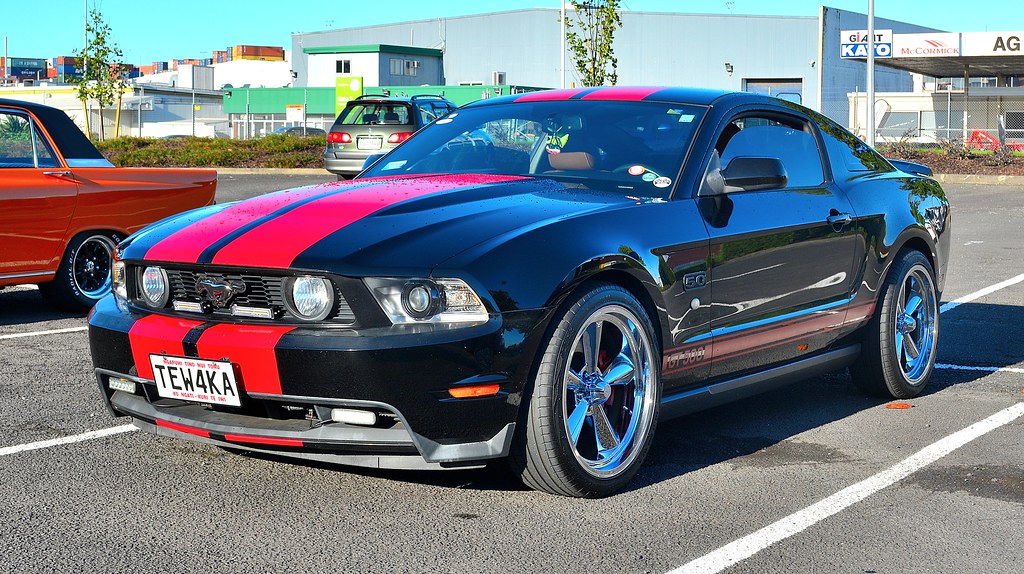
4. **Steering Clear of the 2011 Ford Mustang: Engine Ticking & Misfires**The 2011 Ford Mustang was notable for introducing the new 5.0L Coyote V8 engine, a highly anticipated powerplant promising impressive performance. While this engine quickly garnered acclaim, the 2011 model year unfortunately came with its own set of problems that prospective buyers should be acutely aware of, presenting a paradox of celebrated power and significant reliability concerns.
One of the most well-known and concerning issues was “engine ticking,” a persistent sound that could indicate potentially serious internal engine problems such, as valve or timing chain issues. This audible flaw was a major cause for alarm, often necessitating extensive diagnostic work and expensive repairs, significantly impacting owner confidence and long-term satisfaction.
Furthermore, the 2011 Mustang also faced widespread “AC system failures,” with many drivers reporting malfunctioning air conditioning units, leading to uncomfortable rides and additional repair costs. Owners also experienced “transmission jerks,” where shifting was inconsistent and led to rough, unpleasant rides. If considering a used 2011 model, thoroughly inspect the engine for abnormal noises and ensure the transmission operates smoothly under various conditions. A pre-purchase inspection by an expert is highly recommended.
Car Model Information: 2014 Ford Mustang V6
Name: Ford Mustang
Caption: 2018 Ford Mustang GT 5.0
Aka: Ford T5 (Germany)
Manufacturer: Ford Motor Company
Production: March 1964 – present
ModelYears: 1965–present
Class: Unbulleted list
BodyStyle: Unbulleted list
Layout: Front-engine, rear-wheel-drive layout
Categories: 1970s cars, 1980s cars, 1990s cars, 2+2 coupés, 2000s cars
Summary: The Ford Mustang is an American automobile manufactured and marketed by Ford since 1964, as Ford’s longest nameplate in continuous production. Currently in its seventh generation, it is the fifth-best selling Ford car nameplate. The namesake of the “pony car” automobile segment, the Mustang was developed as a highly styled line of sporty coupes and convertibles derived from existing model lines, initially distinguished by its pronounced “long hood, short deck” proportions.
Originally predicted to sell 100,000 vehicles yearly, the 1965 Mustang became the most successful vehicle launch since the 1927 Model A. Introduced on April 17, 1964 (16 days after the Plymouth Barracuda), over 400,000 units were sold in its first year; the one-millionth Mustang was sold within two years of its launch. In August 2018, Ford produced the 10-millionth Mustang; matching the first 1965 Mustang, the vehicle was a 2019 Wimbledon White convertible with a V8 engine.
The success of the Mustang launch led to multiple competitors from other American manufacturers, including the Chevrolet Camaro and Pontiac Firebird (1967), AMC Javelin (1968), and Dodge Challenger (1970). It also competed with the Plymouth Barracuda, which was launched around the same time. The Mustang also had an effect on designs of coupes worldwide, leading to the marketing of the Toyota Celica and Ford Capri in the United States (the latter, by Lincoln-Mercury). The Mercury Cougar was launched in 1967 as a unique-bodied higher-trim alternative to the Mustang; during the 1970s, it included more features and was marketed as a personal luxury car.
From 1965 until 2004, the Mustang shared chassis commonality with other Ford model lines, staying rear-wheel-drive throughout its production. From 1965 to 1973, the Mustang was derived from the 1960 Ford Falcon compact. From 1974 until 1978, the Mustang (denoted Mustang II) was a longer-wheelbase version of the Ford Pinto. From 1979 until 2004, the Mustang shared its Fox platform chassis with 14 other Ford vehicles (becoming the final one to use the Fox architecture). Since 2005, the Mustang has used the D2C platform, unique to the Mustang.
Through its production, multiple nameplates have been associated with the Ford Mustang series, including GT, Mach 1, Boss 302/429, Cobra (separate from Shelby Cobra), and Bullitt, along with “5.0” fender badging (denoting 4.9 L OHV or 5.0 L DOHC V8 engines).
Get more information about: Ford Mustang
Buying a high-performing used car >>>
Brand: Ford Model: Mustang
Price: $13,500 Mileage: 64,323 mi.
Read more about: High-Mileage Havoc: The Crippling Electrical & Mechanical Nightmares Haunting Your Sports Car – A Deep Dive into the Ford S197 Mustang
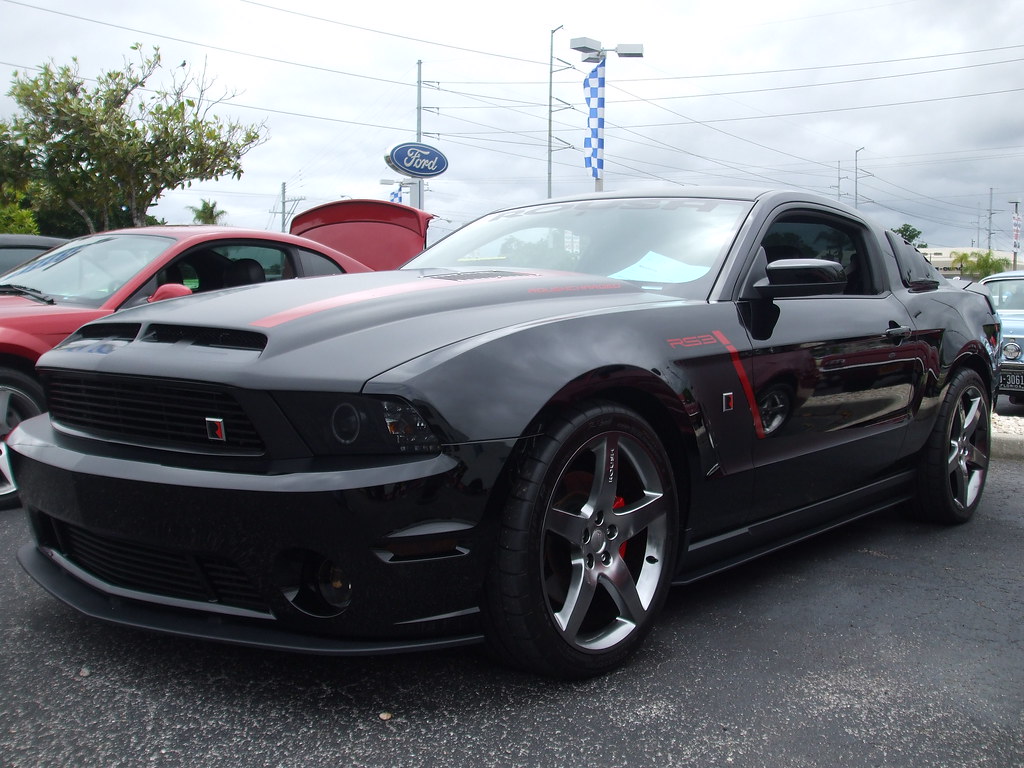
5. **Avoiding the 2012 Ford Mustang: Power Problems Persist**The 2012 Ford Mustang, while benefiting from the acclaimed 5.0L Coyote V8 engine, regrettably continued to struggle with reliability issues that undermined its strong performance. Despite the powerful engine gaining fans, the supporting systems and overall build quality often failed to meet the high expectations set by the Mustang name, creating frustrations for owners.
A major pain point for the 2012 model year was a high incidence of “alternator failures.” Numerous reports cited battery drain and widespread electrical system issues stemming from a faulty alternator, leading to unexpected breakdowns and costly replacements. Such fundamental electrical problems severely impacted the car’s dependability and convenience, making routine drives anxious.
Moreover, the introduction of electric power steering brought “steering malfunctions,” with owners reporting assist failures and warning lights. “Interior electronics” also proved unreliable, with “malfunctions in displays, radios, and dashboard systems” being common. These issues collectively made the 2012 Mustang challenging; a comprehensive check of the electrical system and power steering is paramount if considering this model year.
Car Model Information: 2014 Ford Mustang V6
Name: Ford Mustang
Caption: 2018 Ford Mustang GT 5.0
Aka: Ford T5 (Germany)
Manufacturer: Ford Motor Company
Production: March 1964 – present
ModelYears: 1965–present
Class: Unbulleted list
BodyStyle: Unbulleted list
Layout: Front-engine, rear-wheel-drive layout
Categories: 1970s cars, 1980s cars, 1990s cars, 2+2 coupés, 2000s cars
Summary: The Ford Mustang is an American automobile manufactured and marketed by Ford since 1964, as Ford’s longest nameplate in continuous production. Currently in its seventh generation, it is the fifth-best selling Ford car nameplate. The namesake of the “pony car” automobile segment, the Mustang was developed as a highly styled line of sporty coupes and convertibles derived from existing model lines, initially distinguished by its pronounced “long hood, short deck” proportions.
Originally predicted to sell 100,000 vehicles yearly, the 1965 Mustang became the most successful vehicle launch since the 1927 Model A. Introduced on April 17, 1964 (16 days after the Plymouth Barracuda), over 400,000 units were sold in its first year; the one-millionth Mustang was sold within two years of its launch. In August 2018, Ford produced the 10-millionth Mustang; matching the first 1965 Mustang, the vehicle was a 2019 Wimbledon White convertible with a V8 engine.
The success of the Mustang launch led to multiple competitors from other American manufacturers, including the Chevrolet Camaro and Pontiac Firebird (1967), AMC Javelin (1968), and Dodge Challenger (1970). It also competed with the Plymouth Barracuda, which was launched around the same time. The Mustang also had an effect on designs of coupes worldwide, leading to the marketing of the Toyota Celica and Ford Capri in the United States (the latter, by Lincoln-Mercury). The Mercury Cougar was launched in 1967 as a unique-bodied higher-trim alternative to the Mustang; during the 1970s, it included more features and was marketed as a personal luxury car.
From 1965 until 2004, the Mustang shared chassis commonality with other Ford model lines, staying rear-wheel-drive throughout its production. From 1965 to 1973, the Mustang was derived from the 1960 Ford Falcon compact. From 1974 until 1978, the Mustang (denoted Mustang II) was a longer-wheelbase version of the Ford Pinto. From 1979 until 2004, the Mustang shared its Fox platform chassis with 14 other Ford vehicles (becoming the final one to use the Fox architecture). Since 2005, the Mustang has used the D2C platform, unique to the Mustang.
Through its production, multiple nameplates have been associated with the Ford Mustang series, including GT, Mach 1, Boss 302/429, Cobra (separate from Shelby Cobra), and Bullitt, along with “5.0” fender badging (denoting 4.9 L OHV or 5.0 L DOHC V8 engines).
Get more information about: Ford Mustang
Buying a high-performing used car >>>
Brand: Ford Model: Mustang
Price: $13,500 Mileage: 64,323 mi.
Read more about: Your Garage, Your Rules: 14 Top Cars for Stress-Free DIY Maintenance
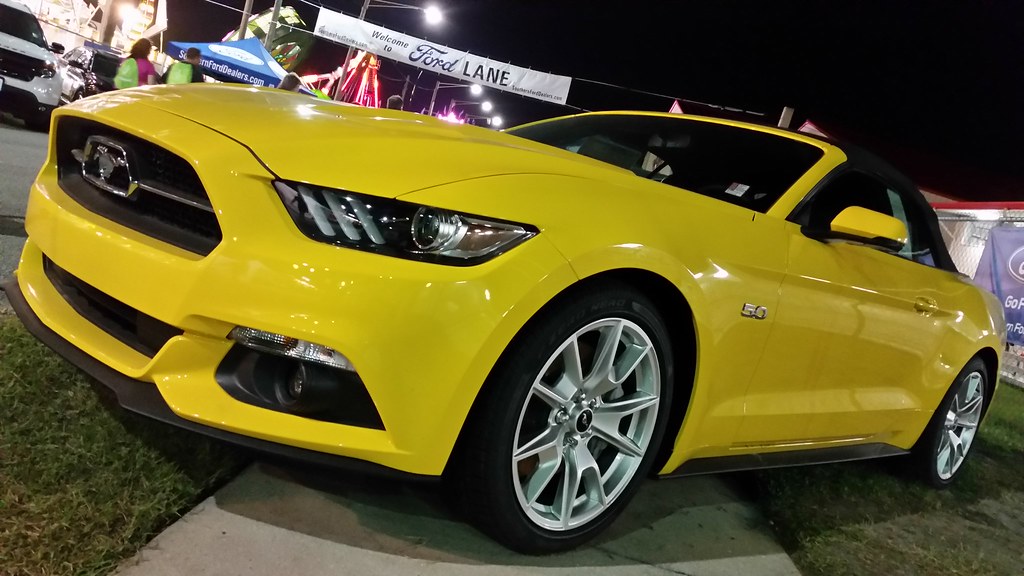
6. **Steering Clear of the 2015 Ford Mustang: First-Year Woes of a New Generation**The year 2015 heralded the launch of the sixth-generation Ford Mustang, a significant milestone introducing a sleek new design and, notably, an independent rear suspension. This monumental change promised improved handling and ride comfort, marking a new era for the iconic pony car. However, as is often the case with entirely new platforms, the 2015 model year was plagued by “first-year hiccups” that quickly became apparent to early adopters.
Among the most troublesome issues were pervasive “electrical glitches.” Owners reported an array of problems, including unreliable backup cameras, malfunctioning sensors, and inconsistent infotainment systems. These modern technological conveniences, designed to enhance the driving experience, frequently became sources of frustration due to their erratic operation. The integration of new electronics often involves a learning curve for manufacturers, and the 2015 Mustang certainly experienced these growing pains.
Furthermore, the 6-speed automatic transmission was frequently cited for “rough shifting,” with owners experiencing “jerky or delayed gear changes” that detracted significantly from the otherwise smooth ride. “Brake noise” was also a common complaint, with reports of “high-pitched squeals and premature wear.” Being the inaugural year of a redesigned platform, the 2015 model suffered from typical teething problems. While later years improved, this particular model year demands a meticulous inspection to ensure these initial bugs have been addressed.
The thrilling pursuit of a Ford Mustang, especially a pre-owned one, requires more than just an appreciation for horsepower. It demands a strategic approach to safeguard your investment and ensure that your dream machine doesn’t transform into a costly headache. Having identified specific model years that warrant extra caution, our next focus shifts to the indispensable strategies every buyer must employ, regardless of the Mustang’s age or alleged condition. This section will guide you through the essential pre-purchase checks that can uncover hidden issues and steer you towards a reliable ride.
These steps aren’t just recommendations; they are critical safeguards designed to empower you with the knowledge to make an informed decision. From scrutinizing official records to engaging a professional mechanic, each strategy is a vital layer of protection in your quest for the perfect used Mustang. Let’s delve into the detailed inspections that will pave the way for a truly satisfying ownership experience.
Car Model Information: 2014 Ford Mustang V6
Name: Ford Mustang
Caption: 2018 Ford Mustang GT 5.0
Aka: Ford T5 (Germany)
Manufacturer: Ford Motor Company
Production: March 1964 – present
ModelYears: 1965–present
Class: Unbulleted list
BodyStyle: Unbulleted list
Layout: Front-engine, rear-wheel-drive layout
Categories: 1970s cars, 1980s cars, 1990s cars, 2+2 coupés, 2000s cars
Summary: The Ford Mustang is an American automobile manufactured and marketed by Ford since 1964, as Ford’s longest nameplate in continuous production. Currently in its seventh generation, it is the fifth-best selling Ford car nameplate. The namesake of the “pony car” automobile segment, the Mustang was developed as a highly styled line of sporty coupes and convertibles derived from existing model lines, initially distinguished by its pronounced “long hood, short deck” proportions.
Originally predicted to sell 100,000 vehicles yearly, the 1965 Mustang became the most successful vehicle launch since the 1927 Model A. Introduced on April 17, 1964 (16 days after the Plymouth Barracuda), over 400,000 units were sold in its first year; the one-millionth Mustang was sold within two years of its launch. In August 2018, Ford produced the 10-millionth Mustang; matching the first 1965 Mustang, the vehicle was a 2019 Wimbledon White convertible with a V8 engine.
The success of the Mustang launch led to multiple competitors from other American manufacturers, including the Chevrolet Camaro and Pontiac Firebird (1967), AMC Javelin (1968), and Dodge Challenger (1970). It also competed with the Plymouth Barracuda, which was launched around the same time. The Mustang also had an effect on designs of coupes worldwide, leading to the marketing of the Toyota Celica and Ford Capri in the United States (the latter, by Lincoln-Mercury). The Mercury Cougar was launched in 1967 as a unique-bodied higher-trim alternative to the Mustang; during the 1970s, it included more features and was marketed as a personal luxury car.
From 1965 until 2004, the Mustang shared chassis commonality with other Ford model lines, staying rear-wheel-drive throughout its production. From 1965 to 1973, the Mustang was derived from the 1960 Ford Falcon compact. From 1974 until 1978, the Mustang (denoted Mustang II) was a longer-wheelbase version of the Ford Pinto. From 1979 until 2004, the Mustang shared its Fox platform chassis with 14 other Ford vehicles (becoming the final one to use the Fox architecture). Since 2005, the Mustang has used the D2C platform, unique to the Mustang.
Through its production, multiple nameplates have been associated with the Ford Mustang series, including GT, Mach 1, Boss 302/429, Cobra (separate from Shelby Cobra), and Bullitt, along with “5.0” fender badging (denoting 4.9 L OHV or 5.0 L DOHC V8 engines).
Get more information about: Ford Mustang
Buying a high-performing used car >>>
Brand: Ford Model: Mustang
Price: $13,500 Mileage: 64,323 mi.
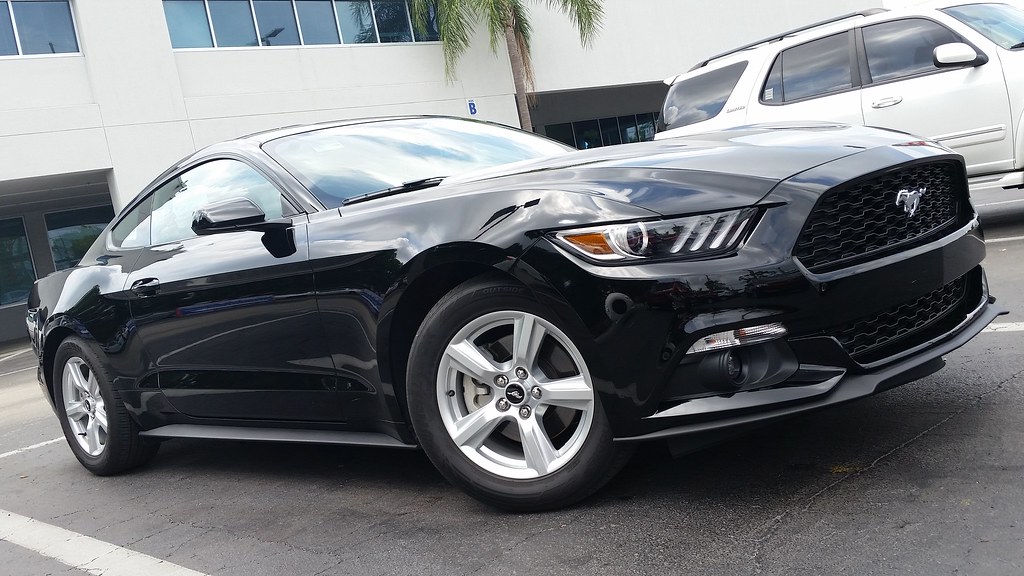
7. **Check the VIN for Recalls and Accidents**Before you even consider opening the hood or settling into the driver’s seat, the first and most fundamental step in evaluating any used Ford Mustang is to thoroughly check its Vehicle Identification Number (VIN). This unique 17-character code is essentially the car’s fingerprint, holding a wealth of information about its manufacturing, specifications, and most importantly, its complete history. It’s an invaluable tool for verifying the car’s authenticity and past.
A crucial part of this VIN check involves looking for any outstanding recalls. Utilize official resources, such as the National Highway Traffic Safety Administration (NHTSA.gov) lookup tool, to meticulously search for unresolved safety recalls. As we’ve seen with models like the 2006 Mustang and the widespread Takata airbag crisis, recalls can impact safety and functionality, often remaining unaddressed by previous owners.
Beyond recalls, a comprehensive VIN check can also reveal whether the car has been involved in major accidents, has title issues, or if there are any odometer discrepancies. This transparency is vital, as a vehicle with a checkered past, such as one with a salvage title or undisclosed damage, can present long-term reliability problems and significantly diminish its resale value. Don’t skip this initial, foundational investigation.
Car Model Information: 2014 Ford Mustang V6
Name: Ford Mustang
Caption: 2018 Ford Mustang GT 5.0
Aka: Ford T5 (Germany)
Manufacturer: Ford Motor Company
Production: March 1964 – present
ModelYears: 1965–present
Class: Unbulleted list
BodyStyle: Unbulleted list
Layout: Front-engine, rear-wheel-drive layout
Categories: 1970s cars, 1980s cars, 1990s cars, 2+2 coupés, 2000s cars
Summary: The Ford Mustang is an American automobile manufactured and marketed by Ford since 1964, as Ford’s longest nameplate in continuous production. Currently in its seventh generation, it is the fifth-best selling Ford car nameplate. The namesake of the “pony car” automobile segment, the Mustang was developed as a highly styled line of sporty coupes and convertibles derived from existing model lines, initially distinguished by its pronounced “long hood, short deck” proportions.
Originally predicted to sell 100,000 vehicles yearly, the 1965 Mustang became the most successful vehicle launch since the 1927 Model A. Introduced on April 17, 1964 (16 days after the Plymouth Barracuda), over 400,000 units were sold in its first year; the one-millionth Mustang was sold within two years of its launch. In August 2018, Ford produced the 10-millionth Mustang; matching the first 1965 Mustang, the vehicle was a 2019 Wimbledon White convertible with a V8 engine.
The success of the Mustang launch led to multiple competitors from other American manufacturers, including the Chevrolet Camaro and Pontiac Firebird (1967), AMC Javelin (1968), and Dodge Challenger (1970). It also competed with the Plymouth Barracuda, which was launched around the same time. The Mustang also had an effect on designs of coupes worldwide, leading to the marketing of the Toyota Celica and Ford Capri in the United States (the latter, by Lincoln-Mercury). The Mercury Cougar was launched in 1967 as a unique-bodied higher-trim alternative to the Mustang; during the 1970s, it included more features and was marketed as a personal luxury car.
From 1965 until 2004, the Mustang shared chassis commonality with other Ford model lines, staying rear-wheel-drive throughout its production. From 1965 to 1973, the Mustang was derived from the 1960 Ford Falcon compact. From 1974 until 1978, the Mustang (denoted Mustang II) was a longer-wheelbase version of the Ford Pinto. From 1979 until 2004, the Mustang shared its Fox platform chassis with 14 other Ford vehicles (becoming the final one to use the Fox architecture). Since 2005, the Mustang has used the D2C platform, unique to the Mustang.
Through its production, multiple nameplates have been associated with the Ford Mustang series, including GT, Mach 1, Boss 302/429, Cobra (separate from Shelby Cobra), and Bullitt, along with “5.0” fender badging (denoting 4.9 L OHV or 5.0 L DOHC V8 engines).
Get more information about: Ford Mustang
Buying a high-performing used car >>>
Brand: Ford Model: Mustang
Price: $13,500 Mileage: 64,323 mi.
Read more about: 15 Underappreciated Sedans: Your Expert Guide to Reliable Hidden Gems Delivering Value and Performance
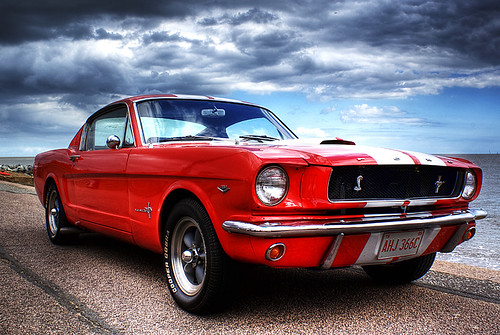
8. **Review Maintenance Records for Consistency**Once you’ve verified the vehicle’s clean history through its VIN, your next detective task involves scrutinizing its maintenance records. A well-documented service history acts as a crucial green flag, offering invaluable insights into how diligently previous owners cared for the car. It’s not just about seeing that repairs were made; it’s about understanding the consistency and quality of that upkeep, which directly impacts the long-term health of the engine, transmission, and other vital components.
When sifting through these records, look for evidence of regular oil changes, routine brake services, tire rotations, and any major repairs that have been undertaken. A complete and organized set of records suggests a responsible owner who prioritized the Mustang’s longevity. Pay close attention to the intervals of service; consistent, timely maintenance is a strong indicator of a well-preserved vehicle and can help predict future reliability.
Conversely, patchy or non-existent service records should raise significant red flags. Gaps in maintenance can conceal neglected issues or indicate a lack of proper care, potentially leading to unforeseen and expensive problems down the road. Prioritize models that come with a clean bill of health and a transparent, well-maintained history, ideally showing no serious recurring issues that were simply patched up rather than properly fixed.
Read more about: Navigating the New Tax Landscape: 14 Key Changes Freelancers Must Know for 2025
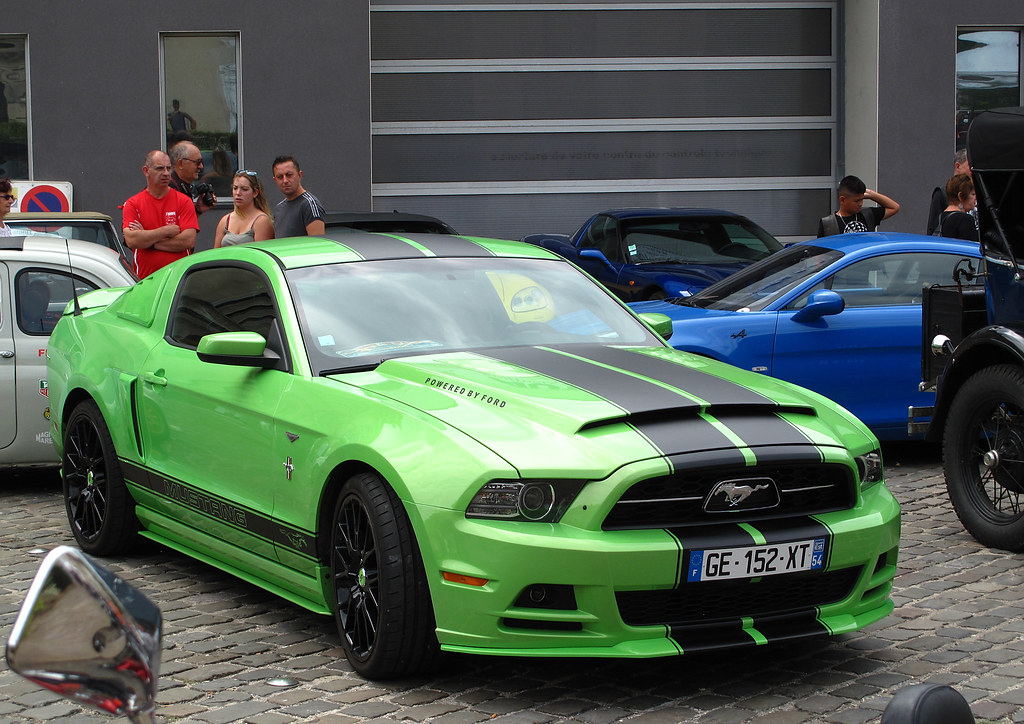
9. **Watch for Engine Noise and Assess Health**The engine is undeniably the heart of any Ford Mustang, and its condition is paramount to a satisfying ownership experience. During your inspection and test drive, engage your senses to listen for any unusual noises that could signal underlying issues. Common complaints in certain Mustang model years, such as “engine ticking” in the 2011 Coyote V8 or “engine knocking” in the 2010 V6, underscore the importance of this auditory inspection.
Beyond listening, a visual check of the engine bay is also crucial. Look for any signs of oil leaks, corrosion, or excessively dirty components that might suggest a lack of regular cleaning or neglected fluid changes. It’s also advisable to inspect the oil condition itself, checking its color and consistency on the dipstick. Dark, sludgy oil or a low fluid level can be indicators of poor maintenance or potential internal engine wear.
Any persistent ticking, knocking, misfires, or other abnormal sounds during startup, idling, or acceleration are immediate red flags. These noises could point to serious internal engine problems, such as valve issues, timing chain wear, or piston slap, which can necessitate extensive and costly diagnostic work and repairs. A healthy Mustang engine should run smoothly and quietly, with no concerning audible flaws.
Car Model Information: 2014 Ford Mustang V6
Name: Ford Mustang
Caption: 2018 Ford Mustang GT 5.0
Aka: Ford T5 (Germany)
Manufacturer: Ford Motor Company
Production: March 1964 – present
ModelYears: 1965–present
Class: Unbulleted list
BodyStyle: Unbulleted list
Layout: Front-engine, rear-wheel-drive layout
Categories: 1970s cars, 1980s cars, 1990s cars, 2+2 coupés, 2000s cars
Summary: The Ford Mustang is an American automobile manufactured and marketed by Ford since 1964, as Ford’s longest nameplate in continuous production. Currently in its seventh generation, it is the fifth-best selling Ford car nameplate. The namesake of the “pony car” automobile segment, the Mustang was developed as a highly styled line of sporty coupes and convertibles derived from existing model lines, initially distinguished by its pronounced “long hood, short deck” proportions.
Originally predicted to sell 100,000 vehicles yearly, the 1965 Mustang became the most successful vehicle launch since the 1927 Model A. Introduced on April 17, 1964 (16 days after the Plymouth Barracuda), over 400,000 units were sold in its first year; the one-millionth Mustang was sold within two years of its launch. In August 2018, Ford produced the 10-millionth Mustang; matching the first 1965 Mustang, the vehicle was a 2019 Wimbledon White convertible with a V8 engine.
The success of the Mustang launch led to multiple competitors from other American manufacturers, including the Chevrolet Camaro and Pontiac Firebird (1967), AMC Javelin (1968), and Dodge Challenger (1970). It also competed with the Plymouth Barracuda, which was launched around the same time. The Mustang also had an effect on designs of coupes worldwide, leading to the marketing of the Toyota Celica and Ford Capri in the United States (the latter, by Lincoln-Mercury). The Mercury Cougar was launched in 1967 as a unique-bodied higher-trim alternative to the Mustang; during the 1970s, it included more features and was marketed as a personal luxury car.
From 1965 until 2004, the Mustang shared chassis commonality with other Ford model lines, staying rear-wheel-drive throughout its production. From 1965 to 1973, the Mustang was derived from the 1960 Ford Falcon compact. From 1974 until 1978, the Mustang (denoted Mustang II) was a longer-wheelbase version of the Ford Pinto. From 1979 until 2004, the Mustang shared its Fox platform chassis with 14 other Ford vehicles (becoming the final one to use the Fox architecture). Since 2005, the Mustang has used the D2C platform, unique to the Mustang.
Through its production, multiple nameplates have been associated with the Ford Mustang series, including GT, Mach 1, Boss 302/429, Cobra (separate from Shelby Cobra), and Bullitt, along with “5.0” fender badging (denoting 4.9 L OHV or 5.0 L DOHC V8 engines).
Get more information about: Ford Mustang
Buying a high-performing used car >>>
Brand: Ford Model: Mustang
Price: $13,500 Mileage: 64,323 mi.
Read more about: Unpacking the Digital Deluge: Simple Secrets to How Social Media Platforms Filter Out Fake News for a Wiser You
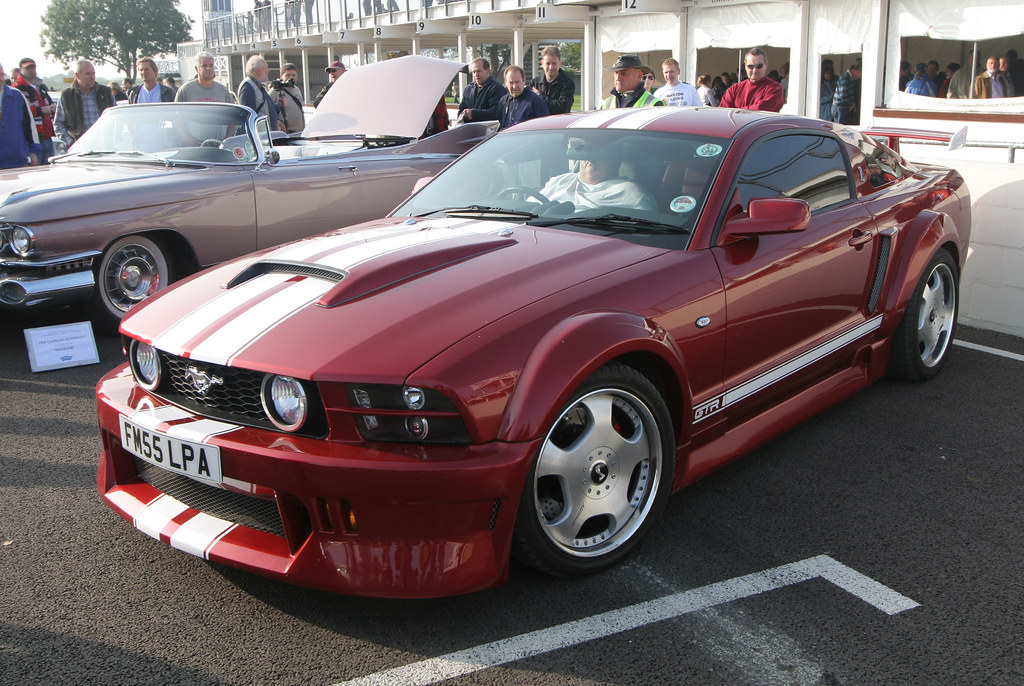
10. **Test the Transmission for Smooth Operation**The transmission, whether manual or automatic, is another critical component that demands your meticulous attention when buying a used Mustang. This system is responsible for transferring the engine’s power to the wheels smoothly and efficiently. Unfortunately, “transmission failure” and “clunky or failing automatic transmissions” have been noted problems in models like the 2010 Mustang, while “rough shifting” plagued the 2015 automatic.
During your test drive, pay extremely close attention to how the transmission shifts through its gears. Accelerate and decelerate at various speeds, including freeway driving and stop-and-go city conditions. Observe if shifts are smooth and timely, or if there is any hesitation, jerking, slipping, or grinding. These inconsistencies are clear indicators of potential transmission problems that could range from minor adjustments to complete rebuilds.
For manual transmissions, ensure the clutch engages smoothly without excessive play or burning smells, and that all gears can be selected easily without resistance. Any delays, hard shifts, or a feeling of slippage, particularly under acceleration, are serious red flags. Transmission fluid leaks, visible beneath the car or in the engine bay, are also a major concern that warrants immediate investigation.
Car Model Information: 2014 Ford Mustang V6
Name: Ford Mustang
Caption: 2018 Ford Mustang GT 5.0
Aka: Ford T5 (Germany)
Manufacturer: Ford Motor Company
Production: March 1964 – present
ModelYears: 1965–present
Class: Unbulleted list
BodyStyle: Unbulleted list
Layout: Front-engine, rear-wheel-drive layout
Categories: 1970s cars, 1980s cars, 1990s cars, 2+2 coupés, 2000s cars
Summary: The Ford Mustang is an American automobile manufactured and marketed by Ford since 1964, as Ford’s longest nameplate in continuous production. Currently in its seventh generation, it is the fifth-best selling Ford car nameplate. The namesake of the “pony car” automobile segment, the Mustang was developed as a highly styled line of sporty coupes and convertibles derived from existing model lines, initially distinguished by its pronounced “long hood, short deck” proportions.
Originally predicted to sell 100,000 vehicles yearly, the 1965 Mustang became the most successful vehicle launch since the 1927 Model A. Introduced on April 17, 1964 (16 days after the Plymouth Barracuda), over 400,000 units were sold in its first year; the one-millionth Mustang was sold within two years of its launch. In August 2018, Ford produced the 10-millionth Mustang; matching the first 1965 Mustang, the vehicle was a 2019 Wimbledon White convertible with a V8 engine.
The success of the Mustang launch led to multiple competitors from other American manufacturers, including the Chevrolet Camaro and Pontiac Firebird (1967), AMC Javelin (1968), and Dodge Challenger (1970). It also competed with the Plymouth Barracuda, which was launched around the same time. The Mustang also had an effect on designs of coupes worldwide, leading to the marketing of the Toyota Celica and Ford Capri in the United States (the latter, by Lincoln-Mercury). The Mercury Cougar was launched in 1967 as a unique-bodied higher-trim alternative to the Mustang; during the 1970s, it included more features and was marketed as a personal luxury car.
From 1965 until 2004, the Mustang shared chassis commonality with other Ford model lines, staying rear-wheel-drive throughout its production. From 1965 to 1973, the Mustang was derived from the 1960 Ford Falcon compact. From 1974 until 1978, the Mustang (denoted Mustang II) was a longer-wheelbase version of the Ford Pinto. From 1979 until 2004, the Mustang shared its Fox platform chassis with 14 other Ford vehicles (becoming the final one to use the Fox architecture). Since 2005, the Mustang has used the D2C platform, unique to the Mustang.
Through its production, multiple nameplates have been associated with the Ford Mustang series, including GT, Mach 1, Boss 302/429, Cobra (separate from Shelby Cobra), and Bullitt, along with “5.0” fender badging (denoting 4.9 L OHV or 5.0 L DOHC V8 engines).
Get more information about: Ford Mustang
Buying a high-performing used car >>>
Brand: Ford Model: Mustang
Price: $13,500 Mileage: 64,323 mi.
Read more about: Driving Strong Past 150,000 Miles: 10 Transmission Traps to Avoid for Truck Longevity
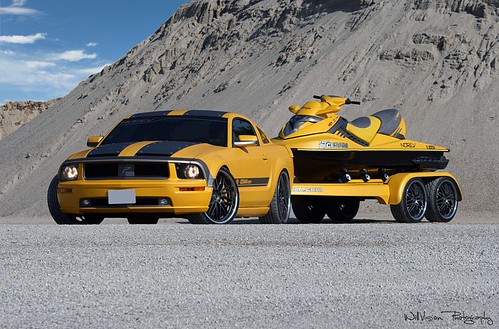
11. **Inspect All Electrical and Interior Electronics**Modern vehicles, including the Ford Mustang, are increasingly reliant on complex electrical systems and sophisticated interior electronics. While these features enhance convenience and driving pleasure, they can also be significant sources of frustration and costly repairs when they malfunction. As evidenced by “electrical gremlins” in the 2005 model, “alternator failures” and “interior electronics” issues in the 2012, and “electrical glitches” in the 2015 Mustang, these systems are common failure points.
Conduct a thorough checklist of all electronic components during your inspection. Test every power window, ensure all dashboard warning lights illuminate and then extinguish as expected, and verify that the infotainment system, including the radio, touchscreen, backup camera, and smartphone integration (Apple CarPlay/Android Auto), functions flawlessly. Don’t forget to check the air conditioning system for proper cooling, as “AC system failures” were a problem in 2011.
Any malfunctions, flickering displays, unresponsive buttons, or persistent warning lights are signs of potential underlying electrical issues. These problems can be notoriously difficult and expensive to diagnose and repair, pointing to deeper systemic flaws in the vehicle’s wiring or control modules. A fully functional electrical system is key to both safety and an enjoyable driving experience.
Car Model Information: 2014 Ford Mustang V6
Name: Ford Mustang
Caption: 2018 Ford Mustang GT 5.0
Aka: Ford T5 (Germany)
Manufacturer: Ford Motor Company
Production: March 1964 – present
ModelYears: 1965–present
Class: Unbulleted list
BodyStyle: Unbulleted list
Layout: Front-engine, rear-wheel-drive layout
Categories: 1970s cars, 1980s cars, 1990s cars, 2+2 coupés, 2000s cars
Summary: The Ford Mustang is an American automobile manufactured and marketed by Ford since 1964, as Ford’s longest nameplate in continuous production. Currently in its seventh generation, it is the fifth-best selling Ford car nameplate. The namesake of the “pony car” automobile segment, the Mustang was developed as a highly styled line of sporty coupes and convertibles derived from existing model lines, initially distinguished by its pronounced “long hood, short deck” proportions.
Originally predicted to sell 100,000 vehicles yearly, the 1965 Mustang became the most successful vehicle launch since the 1927 Model A. Introduced on April 17, 1964 (16 days after the Plymouth Barracuda), over 400,000 units were sold in its first year; the one-millionth Mustang was sold within two years of its launch. In August 2018, Ford produced the 10-millionth Mustang; matching the first 1965 Mustang, the vehicle was a 2019 Wimbledon White convertible with a V8 engine.
The success of the Mustang launch led to multiple competitors from other American manufacturers, including the Chevrolet Camaro and Pontiac Firebird (1967), AMC Javelin (1968), and Dodge Challenger (1970). It also competed with the Plymouth Barracuda, which was launched around the same time. The Mustang also had an effect on designs of coupes worldwide, leading to the marketing of the Toyota Celica and Ford Capri in the United States (the latter, by Lincoln-Mercury). The Mercury Cougar was launched in 1967 as a unique-bodied higher-trim alternative to the Mustang; during the 1970s, it included more features and was marketed as a personal luxury car.
From 1965 until 2004, the Mustang shared chassis commonality with other Ford model lines, staying rear-wheel-drive throughout its production. From 1965 to 1973, the Mustang was derived from the 1960 Ford Falcon compact. From 1974 until 1978, the Mustang (denoted Mustang II) was a longer-wheelbase version of the Ford Pinto. From 1979 until 2004, the Mustang shared its Fox platform chassis with 14 other Ford vehicles (becoming the final one to use the Fox architecture). Since 2005, the Mustang has used the D2C platform, unique to the Mustang.
Through its production, multiple nameplates have been associated with the Ford Mustang series, including GT, Mach 1, Boss 302/429, Cobra (separate from Shelby Cobra), and Bullitt, along with “5.0” fender badging (denoting 4.9 L OHV or 5.0 L DOHC V8 engines).
Get more information about: Ford Mustang
Buying a high-performing used car >>>
Brand: Ford Model: Mustang
Price: $13,500 Mileage: 64,323 mi.
Read more about: Jump-Start Smarter: 14 Critical Mistakes Drivers Make That Can Damage Their Car (or Themselves)
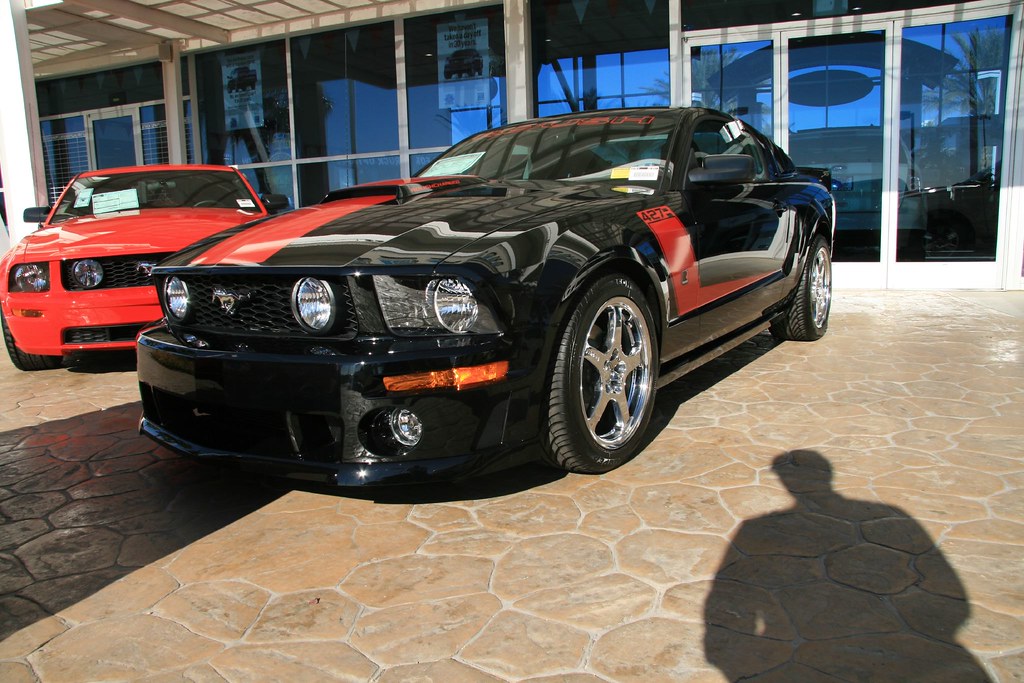
12. **The Indispensable Pre-Purchase Inspection by a Professional Mechanic**After conducting your thorough personal checks, the most critical step in mitigating risks when buying any used Ford Mustang is to have a trusted, independent mechanic perform a comprehensive pre-purchase inspection (PPI). While your own evaluation is valuable, a professional’s expertise can uncover hidden issues that aren’t immediately visible to the untrained eye, making this a small investment that could save you thousands.
A skilled mechanic will go beyond what you can see, assessing the undercarriage for rust, evaluating the suspension components for wear like “noisy bushings” or “clunking noises over bumps,” and meticulously checking the braking system for issues like “squeaking sounds or vibrations” and premature wear on pads and rotors. They can also connect diagnostic tools to the vehicle’s onboard computer, revealing fault codes that might not trigger a dashboard warning light but still indicate developing problems.
Their expertise extends to examining the vehicle’s frame for signs of previous structural damage that a VIN check might not fully detail, and identifying subtle leaks or wear in the engine and transmission that could escalate into major repairs. This objective assessment provides a detailed report on the car’s true mechanical condition, arming you with leverage for negotiation or the crucial insight to walk away from a problematic purchase.
Ultimately, whether it’s ensuring even panel gaps, checking tire alignment for “uneven wear” that signals suspension issues, or verifying all accessories work, a professional PPI is the ultimate safeguard. It transforms uncertainty into confidence, ensuring that your chosen Mustang isn’t just a powerful machine, but a reliable one that will deliver the thrill and performance you expect without unexpected financial setbacks.
Car Model Information: 2014 Ford Mustang V6
Name: Ford Mustang
Caption: 2018 Ford Mustang GT 5.0
Aka: Ford T5 (Germany)
Manufacturer: Ford Motor Company
Production: March 1964 – present
ModelYears: 1965–present
Class: Unbulleted list
BodyStyle: Unbulleted list
Layout: Front-engine, rear-wheel-drive layout
Categories: 1970s cars, 1980s cars, 1990s cars, 2+2 coupés, 2000s cars
Summary: The Ford Mustang is an American automobile manufactured and marketed by Ford since 1964, as Ford’s longest nameplate in continuous production. Currently in its seventh generation, it is the fifth-best selling Ford car nameplate. The namesake of the “pony car” automobile segment, the Mustang was developed as a highly styled line of sporty coupes and convertibles derived from existing model lines, initially distinguished by its pronounced “long hood, short deck” proportions.
Originally predicted to sell 100,000 vehicles yearly, the 1965 Mustang became the most successful vehicle launch since the 1927 Model A. Introduced on April 17, 1964 (16 days after the Plymouth Barracuda), over 400,000 units were sold in its first year; the one-millionth Mustang was sold within two years of its launch. In August 2018, Ford produced the 10-millionth Mustang; matching the first 1965 Mustang, the vehicle was a 2019 Wimbledon White convertible with a V8 engine.
The success of the Mustang launch led to multiple competitors from other American manufacturers, including the Chevrolet Camaro and Pontiac Firebird (1967), AMC Javelin (1968), and Dodge Challenger (1970). It also competed with the Plymouth Barracuda, which was launched around the same time. The Mustang also had an effect on designs of coupes worldwide, leading to the marketing of the Toyota Celica and Ford Capri in the United States (the latter, by Lincoln-Mercury). The Mercury Cougar was launched in 1967 as a unique-bodied higher-trim alternative to the Mustang; during the 1970s, it included more features and was marketed as a personal luxury car.
From 1965 until 2004, the Mustang shared chassis commonality with other Ford model lines, staying rear-wheel-drive throughout its production. From 1965 to 1973, the Mustang was derived from the 1960 Ford Falcon compact. From 1974 until 1978, the Mustang (denoted Mustang II) was a longer-wheelbase version of the Ford Pinto. From 1979 until 2004, the Mustang shared its Fox platform chassis with 14 other Ford vehicles (becoming the final one to use the Fox architecture). Since 2005, the Mustang has used the D2C platform, unique to the Mustang.
Through its production, multiple nameplates have been associated with the Ford Mustang series, including GT, Mach 1, Boss 302/429, Cobra (separate from Shelby Cobra), and Bullitt, along with “5.0” fender badging (denoting 4.9 L OHV or 5.0 L DOHC V8 engines).
Get more information about: Ford Mustang
Buying a high-performing used car >>>
Brand: Ford Model: Mustang
Price: $13,500 Mileage: 64,323 mi.
Read more about: Buyer Beware: These 11 Reliable Family Minivans Become Transmission Threats Once They Pass 120,000 Miles
The Ford Mustang is a muscle car legend, offering style, performance, and heritage in one powerful package. While the dream of owning one is a strong draw, an informed and cautious approach to the used market is paramount. By meticulously scrutinizing VINs, reviewing maintenance records, performing diligent inspections of the engine, transmission, and electronics, and crucially, enlisting the expert eye of a trusted mechanic, you can navigate the potential pitfalls. Choose wisely, and you’ll secure a Mustang that provides not just exhilarating drives, but reliable performance for years to come. Your thoroughness now will translate into boundless enjoyment on the open road.

